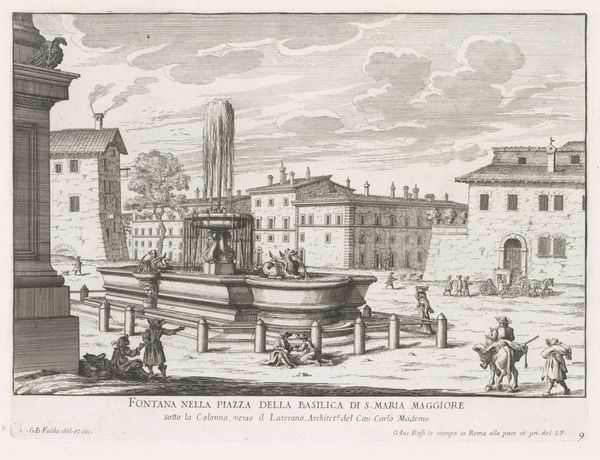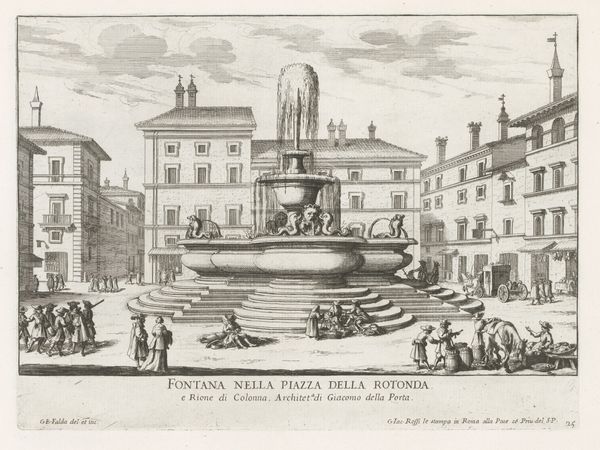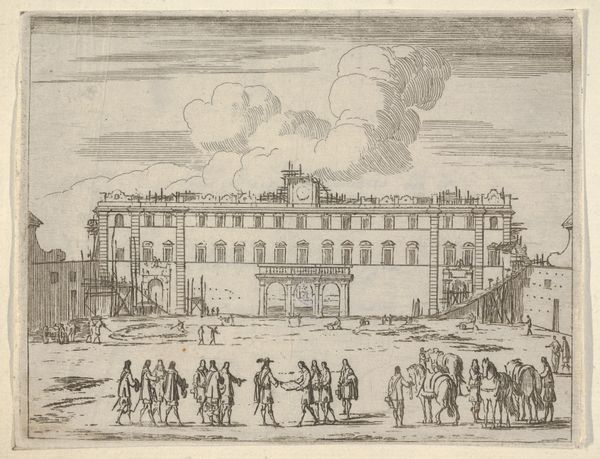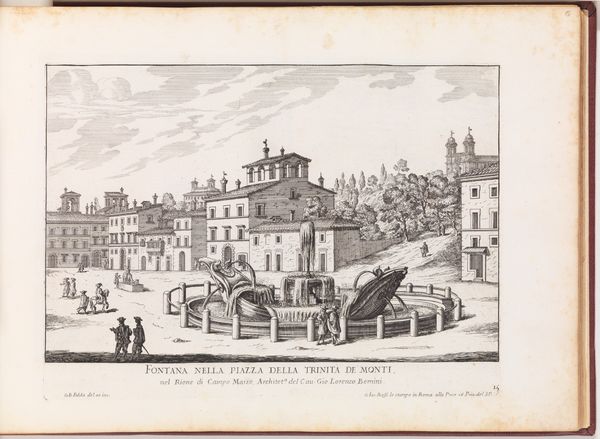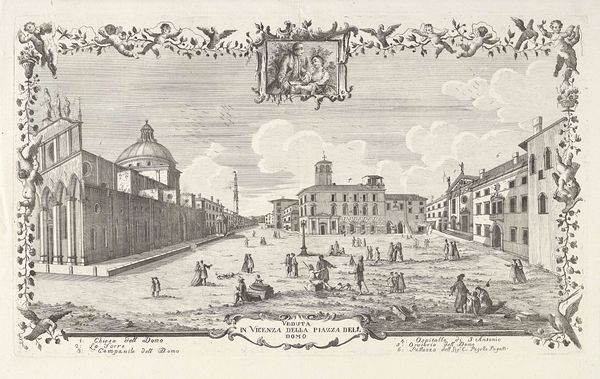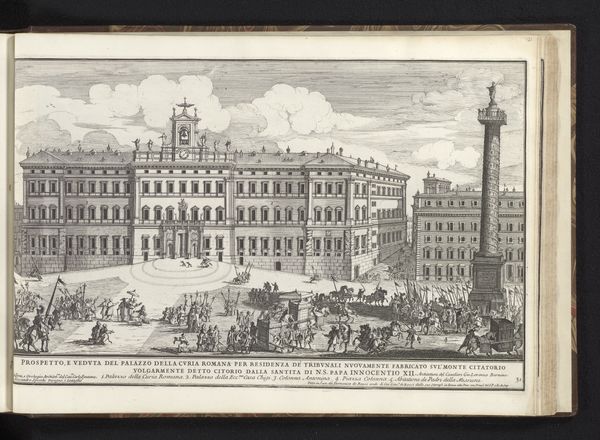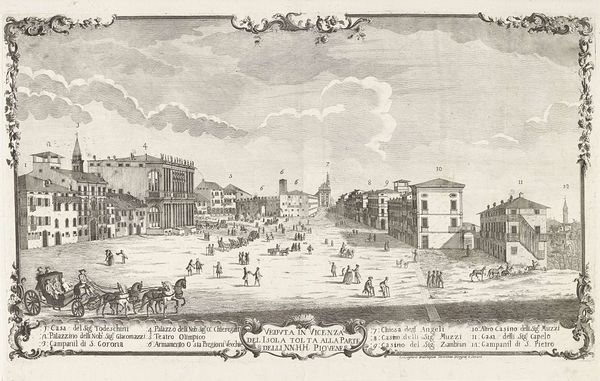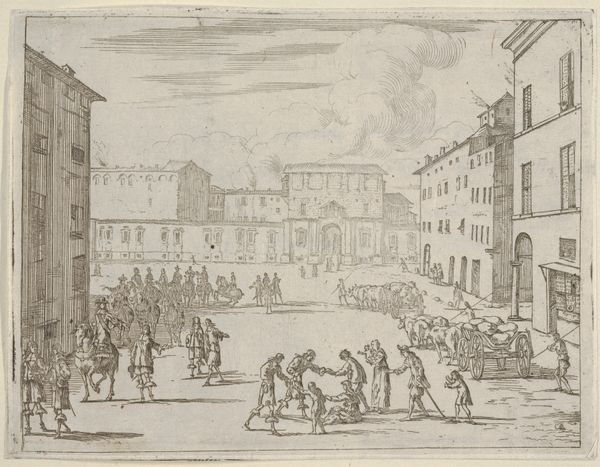
print, engraving, architecture
#
baroque
# print
#
cityscape
#
history-painting
#
italian-renaissance
#
engraving
#
architecture
Dimensions: height 211 mm, width 287 mm
Copyright: Rijks Museum: Open Domain
Editor: This is "Fontain op Piazza Colonna te Rome" by Giovanni Battista Falda, created sometime between 1653 and 1691. It’s an engraving, and I’m immediately drawn to the way Falda captured the bustle of city life around such an impressive architectural feat. What can you tell me about its historical significance? Curator: Well, beyond the architectural precision, prints like these played a critical role. Consider Rome's urban development in the 17th century. Images like these, disseminated as prints, showcased not just architecture but also Papal power and urban planning. What do you think this print was trying to convey to its audience? Editor: Maybe a sense of Roman grandeur, a demonstration of their achievements at the time? Sort of like propaganda through art and architecture? Curator: Precisely. Think of the Baroque period—an era where the Church used art to reaffirm its authority. Cityscapes such as these helped define and promote the city as a place of magnificence and religious power. And these images weren’t just viewed as simple records; they actively shaped perceptions and contributed to Rome's self-image. Look at how meticulously the artist rendered details to glorify Rome’s image, focusing particularly on public works commissioned by powerful patrons. Editor: That makes sense. So, this print isn’t just documenting a fountain, but communicating the power dynamics of the era, how urban spaces became tools. It really changes how I see cityscapes. Curator: Exactly! We’ve moved from simply appreciating the aesthetics to understanding the layers of social and political context. Recognizing this reframes our viewing experience to its place as an effective piece of political imagery. Editor: Definitely! I now view it as more than just a historical snapshot but instead an insight into 17th-century Rome’s self-representation. Curator: Precisely; history is another lens into our art, which is, itself, a lens into history.
Comments
No comments
Be the first to comment and join the conversation on the ultimate creative platform.
